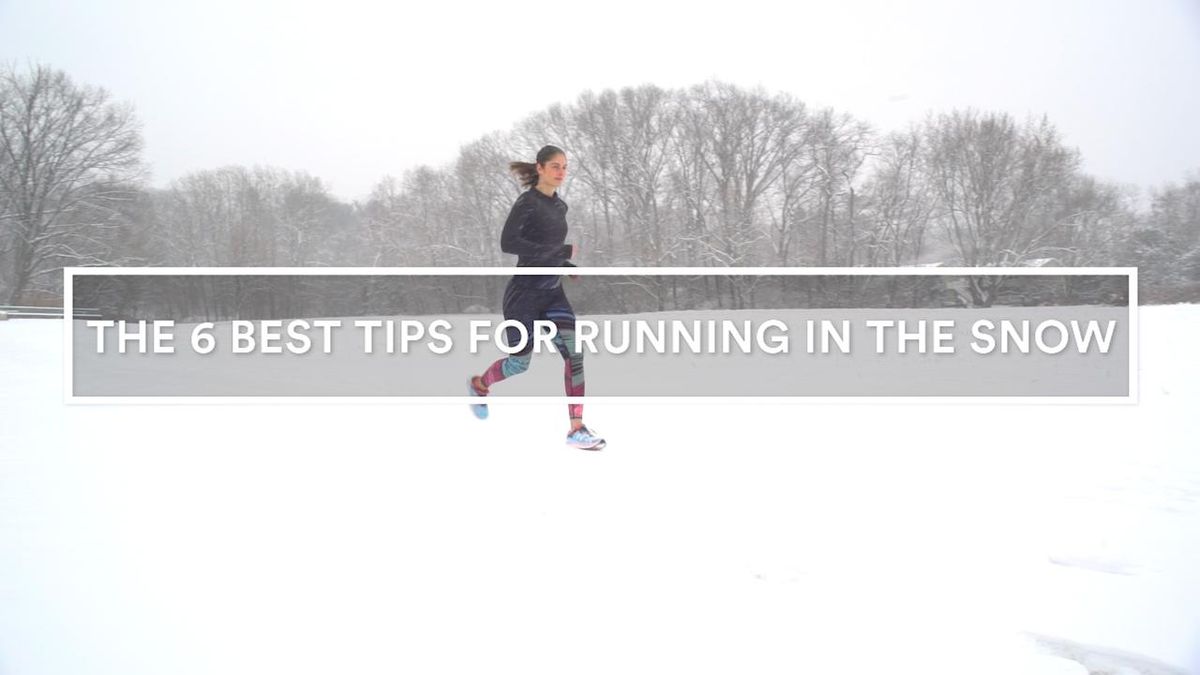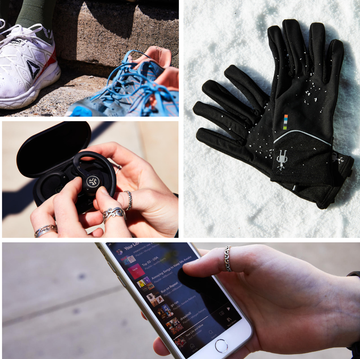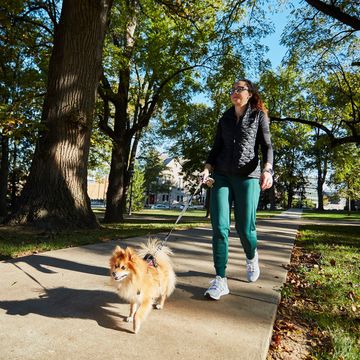You are at the two-week mark of the Winter #RWRunStreak, and by now, you may already have settled into a rhythm that gets you going day after day. If you’re running in cold weather, you already know how to warm up, stay warm, and motivated. But what you do for winding back down after a run can be the secret sauce to staying on track with your streak—or whatever you’re training for right now.
If you haven’t yet adopted a self-care ritual, developing a cooldown routine is equally as important as what you do before or during your run. So, dedicating time to properly cool down by stretching, rehydrating, and massaging your sore muscles is a great way to make sure you’re ready for your next run—no matter how long or short it is.
Here is a short list of things to be mindful of when coming back from your next run.
Don’t run door-to-door
As much as you might want to plop down onto a couch, taking a few minutes to walk after a run is a must. For example, if you do a 5-mile run, Janet Hamilton C.S.C.S, and owner of Run Strong in Atlanta tells Runner’s World, “You might walk for two and a half to five minutes after your run—just strolling around to get your body back down to its prerun metabolism—to get your heart rate back down and get your respiration rate down.”
Allowing your body to sync back to this normal resting rate, smoothly and naturally, will be better for your overall recovery and cardio health.
“There are a lot of benefits of the body coming back to homeostasis—back to its starting baseline—that you don’t want to rush through,” Theresa Toczylowski, physical therapist and Run Clinic supervisor at MossRehab near Philadelphia, tells Runner’s World.
Change your clothes
If you’re coming inside from running in the cold, it’s likely that you’re sweating under all those layers, even if you don’t feel it initially. Depending on how long you’ve been out, you might want to rush inside to change your clothes and warm up as quickly as possible.
“When I run in the cold my favorite thing to do is to come in and take a shower, get a hot beverage—hot chocolate, hot cider, hot coffee—something warm in my body,” Hamilton says.
Hydrate and refuel
“One thing to remember is we still sweat in the winter, especially if we have overdressed or completed a tough workout. Rehydrating and replacing our electrolytes remain important throughout the winter months,” says Lisa Braden, a registered dietitian who works with endurance runners.
For longer runs, Braden suggests refueling and hydrating within the first hour to help you recover faster. “It doesn’t take much, but a little goes a long way. Ideally, 200 to 300 calories at a 3:1 carb to protein ratio,” for a snack she says. Also, whether you run one mile or five, getting in the proper nutrients this time of year will be helpful in fight of the cold and flu. “Sickness spikes in the winter, so staying healthy with nutrient-rich foods can keep you from catching germs and disrupting your training,” Braden said.
Hit the shower
How hot or cold you take your shower after a run can impact your recovery. Experts have long debated over the benefits and disadvantages of both hot and cold-water therapy. A 2018 meta-analysis published in the Frontiers in Physiology journal highlighted cold water immersion as an effective way to reduce inflammation. While there aren’t many studies that highlight hot water as a recovery technique for runners, Hamilton says the runners she works with tell her they prefer soaking in cool water rather than hot because they feel like they bounced back quicker.
“I would say stay somewhere in the middle,” Toczylowski says, “not too hot and not too cold, either one is going to stress your system.” However, if you still want to take a quick cold bath—five or 10 minutes—to help your muscles recover, you can. Hamilton suggested warming up a towel, grabbing a hot drink, and jumping right in. To make the experience more tolerable, “climb in, and wrap that hot towel around your shoulders.”
Don’t forget to stretch and massage
Your postrun stretch routine is going to depend on how many miles you logged. For shorter distances—at least a mile for run streak—Hamilton says stretching immediately after is the way to go. But if you’re running for longer distances, she says it’s better to wait. “While it’s always advisable to stretch while you are warm because that’s a little easier on your muscles, stretching when you’re fatigued puts you at a little bit of a disadvantage,” Hamilton says. “Your muscle can’t sustain the strain as easily as it could if it had a chance to recover.” So for longer runs like 15 miles or more Hamilton suggests waiting one to two hours before stretching.
If you’re feeling sore, thank your muscles for all their hard work with a self-massage. A massage gun or “the foam roller may help with some blood flow, it may feel pretty good, but don’t go in there and beat it up,” Hamilton says.
Now watch this:

Monique LeBrun joined the editorial staff in October 2021 as the associate health and fitness editor. She has a master’s degree in journalism and has previously worked for ABC news and Scholastic. She is an avid runner who loves spending time outside.














